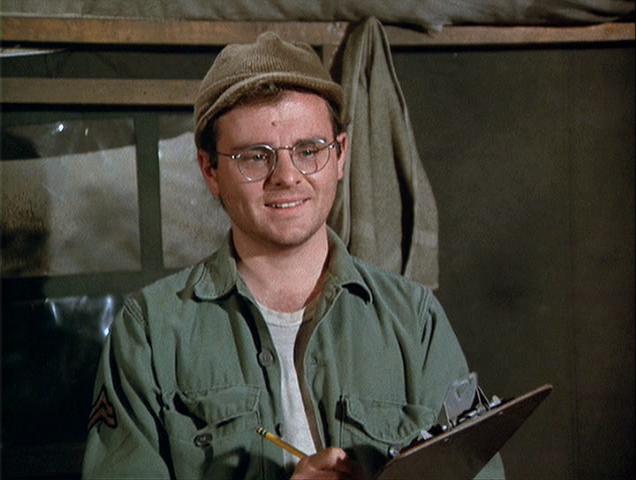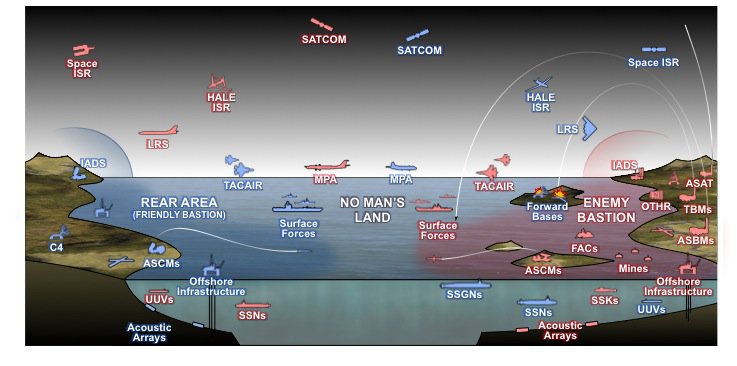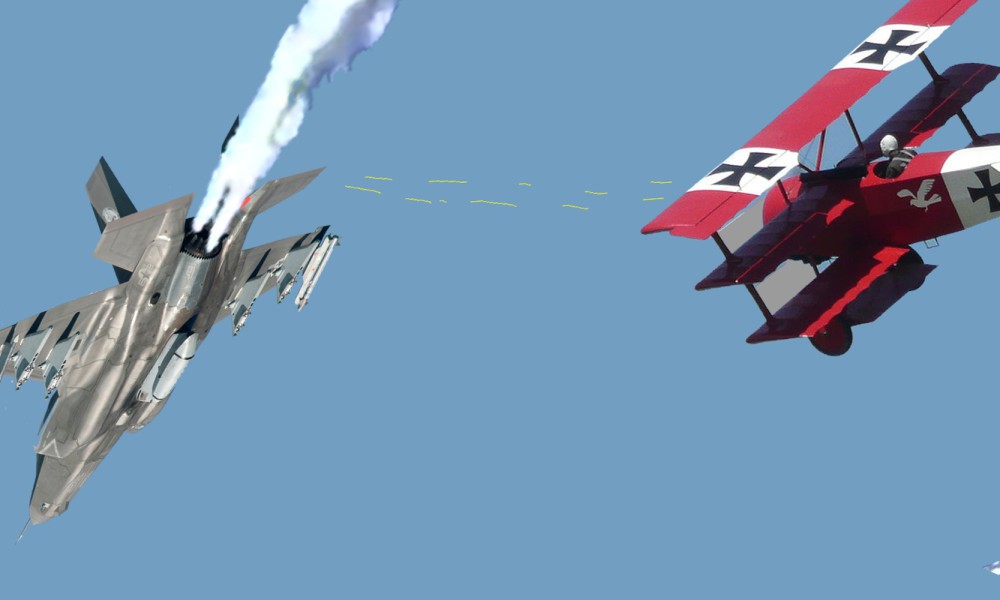 U.S. Army Chief of Staff General Mark Milley and U.S. Marine General Robert Neller recently signed a joint white paper to be sent for review by Joint Chiefs of Staff Gen. Joseph Dunford Jr.,outlining the collective views of their services on what has been termed “multi-domain battle.” The Army and Marine Corps have also established a joint task force to develop tactics applicable to the concept.
U.S. Army Chief of Staff General Mark Milley and U.S. Marine General Robert Neller recently signed a joint white paper to be sent for review by Joint Chiefs of Staff Gen. Joseph Dunford Jr.,outlining the collective views of their services on what has been termed “multi-domain battle.” The Army and Marine Corps have also established a joint task force to develop tactics applicable to the concept.
Multi-domain battle is a concept that has evolved as a response to challenges posed by anti-access/area-denial capabilities fielded by potential U.S. military rivals, such as Russia, China, and Iran. Its proponents argue that in it’s broadest application, the concept seeks to expand the principles of combined arms tactics beyond the traditional air/sea/land service boundaries and apply them to joint operations and newly emerging domains such as cyber warfare and information operations. Trevor Dupuy postulated that the employment of combined arms on the battlefield was one solution armies have historically adopted to adapt to increases in weapon lethality over time.
When the Army officially introduced the concept last year, General Milley said “This is pretty much the beginning of a new way of thinking.” General Neller echoed Milley’s comments. “We’ve been shoulder-and-shoulder on multi-domain battle and land concepts. We can’t afford to waste any resources on duplication when it’s not necessary. We see the problem the same way; we have the same conclusions.” U.S. Pacific Command (USPACOM) commander, U.S. Navy Admiral Harry B. Harris commented last fall that
We need a degree of jointness, in my opinion, in which no one military service dominates and no domain has a fixed boundary. A combatant commander must be able to create effects from any single domain to target in every domain in order to fight tonight and win. [I need] a true land-based cross-domain capability [that] offers us an integrated joint force capable of deterring rising powers by denying them the domains in which they seek to operate.
U.S. Army, Pacific (USARPC) is currently working with USPACOM to finalize exercises scheduled for this spring to test multi-domain battle warfighting concepts. Similar exercises are being planned for Europe in 2018.
There is a sense of urgency regarding multi-domain battle in the Pacific, given ongoing tensions with North Korea and recent comments by Trump Administration officials regarding the South China Sea. USARPC commander General Robert Brown recently stated “This isn’t something 10 years from now. If Kim Jong-un goes south tomorrow, I will need some of this tomorrow.'”
Even as the Army and Marine Corps move forward with integrating multi-domain battle into their combat doctrines, the concept is not without its discontents. Aside from Admiral Harris, the Navy has had little to say about multi-domain battle. The U.S. Air Force has also expressed skepticism that U.S. land combat forces will reduce their dependence on air power anytime soon. When the Army raised concerns last year about capabilities Russian forces had demonstrated in the Ukraine, some in its sisters services and the national security community accused it of alarmism in support of its lobbying for an increased share of the defense budget.
Whether mutli-domain battle survives as an organic concept, it seems to be spurring useful thinking about warfare in the near future. In addition to stimulating new technological research and development (Third Offset Strategy), it is leading to new ways at looking at command and control, planning, and notions of “jointness.”


![The Remote Controlled Abrams Tank [Hammacher Schlemmer]](https://dupuyinstitute.dreamhosters.com/wp-content/uploads/2016/10/remote-control-m1a2-abrams-tank-xl.jpg)






![British Mark III Tank in ditch, 1917 [Wikimedia Commons]](https://dupuyinstitute.dreamhosters.com/wp-content/uploads/2016/06/British-Mark-III-Tank-in-ditch-1917.jpg)